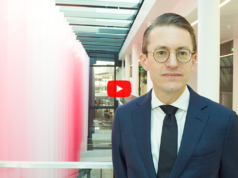 Quanta Dialysis Technologies has announced that it has received US Food and Drug Administration (FDA) 510(k) clearance for an expanded indication of the Quanta dialysis system, a “compact and easy-to-use” haemodialysis device, for two modalities of continuous renal replacement therapy (CRRT): continuous venovenous haemodialysis (CVVHD) and slow continuous ultrafiltration (SCUF).
Quanta Dialysis Technologies has announced that it has received US Food and Drug Administration (FDA) 510(k) clearance for an expanded indication of the Quanta dialysis system, a “compact and easy-to-use” haemodialysis device, for two modalities of continuous renal replacement therapy (CRRT): continuous venovenous haemodialysis (CVVHD) and slow continuous ultrafiltration (SCUF).
Under the new 510(k), the Quanta system is the “only dialysis device FDA-cleared to provide intermittent haemodialysis (IHD), sustained low efficiency dialysis (SLED) or bagless CRRT which creates dialysate on demand—all in a single machine”, states a press release.
The Quanta dialysis system was originally designed, the release adds, to serve the more than two million people with end-stage kidney disease (ESKD) worldwide who receive treatment with dialysis or a kidney transplant. The latest addition of its Trinal Kidney Therapy (TKT) software provides a treatment solution for critically ill patients diagnosed with acute kidney injury (AKI) who require dialysis. It features dialysate flow rates from 50 to 500mL/min and treatment times up to 24 hours of continuous delivery.
“This clearance is a true game-changer for acute care settings,” said Quanta CEO, Alejandro Galindo. “Hospitals are often constrained with limited space and nursing staff. The Quanta dialysis system with TKT software provides an all-in-one solution for hospitals with an intensive care unit (ICU) looking to reduce their device footprint, maximize their operational efficiencies, reduce burden on nurses and substantially lower consumables expenses.”
Mortality for ICU patients with severe AKI who need dialysis has been reported to exceed 50% in patients often requiring intravenous life support to maintain a minimum blood pressure. CRRT offers a “slower and gentler alternative” to conventional dialysis; continuous dialysis runs 24 hours a day as compared to traditional haemodialysis, which occurs over a four-hour period, enabling better real time management of volume and biochemistry for patients.
“Critically ill patients that are haemodynamically unstable, such as those with severe AKI, are more challenging to manage in the ICU balancing volume status, inotropic support and ventilation requirements. Because of its slower rate of fluid removal, CRRT may cause less stress for the patient and enable more real-time decision making for clinical teams on a minute-to-minute basis,” said Quanta chief medical officer, Paul Komenda. “However, once the hemodynamic status of the patient has improved, a transition to IHD or SLED may be the best option. A device than can perform all three modalities in one is ideal.”
Quanta is ready to commercialise the Quanta system with TKT software, and expects to officially launch the product at the 2023 American Society of Nephrology (ASN) Annual Meeting.












